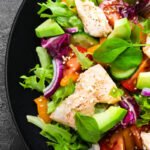Hydroponics vs. traditional (soil) cultivation, we would like to start this blog by highlighting that nowadays the estimated world population is 7.7 billion inhabitants. By 2030 we are predicted to be approximately 9 billion, and according to the FAO the demand for food will increase by 60% above current levels. 33% of the soil is destroyed by erosion and as a result 10% of agricultural yields will be lost.
Here are some of the differences between the two crops and why hydroponics is the best alternative for food production.
The differences between hydroponic cultivation and traditional cultivation:
| Traditional Crop | Hydroponic Crops |
| Soils become poor and lose many nutrients with repeated harvests. | The medium is controlled with respect to its nutrient content, which is replenished. |
| They lose their structure with continuous crops and the scarcity of organic matter. | The medium remains controlled in its characteristics (drainage, aeration) and is reorganized again. |
| The soils must be sterilized by pathogenic microbial flora. | No problems exist with respect to pathogenic microbial flora. |
| Lower cost in relation to the start of cultivation. | High costs of installation at the beginning of cultivation. |
| High cost of labor in the plant cycle: harvesting, weeding, etc. | Low manpower demand, which represents a low cost in disinfection. |
| Regular to low crop density. | High crop density and increased overall yields due to excellent quality. |
| Losses of fertilizer due to leaching and soil washing. | Efficient fertilizer use. |
| Crops must be grown on productive soils, because poor soils result in losses. | The environment is chosen and renewed when necessary, and the nutrient level is maintained. |
| Irrigation is fundamental in this kind of crop, because water stress must be avoided. | No water stress. |
| Plagues and diseases can be controlled at the onset of attack with agrochemicals for fungi, bacteria, viruses and insects, but the affected plants must be destroyed. | Pests and diseases can be controlled preventively. |
Discover here our hydroponic greenhouses
MARTHA ALVAREZ. (2011). HIDROPONÍA: UNA GUIA ESENCIAL PARA EL CULTIVO EN AGUA DE FRUTAS, HORTALIZAS Y PLANTAS FLORALES.




